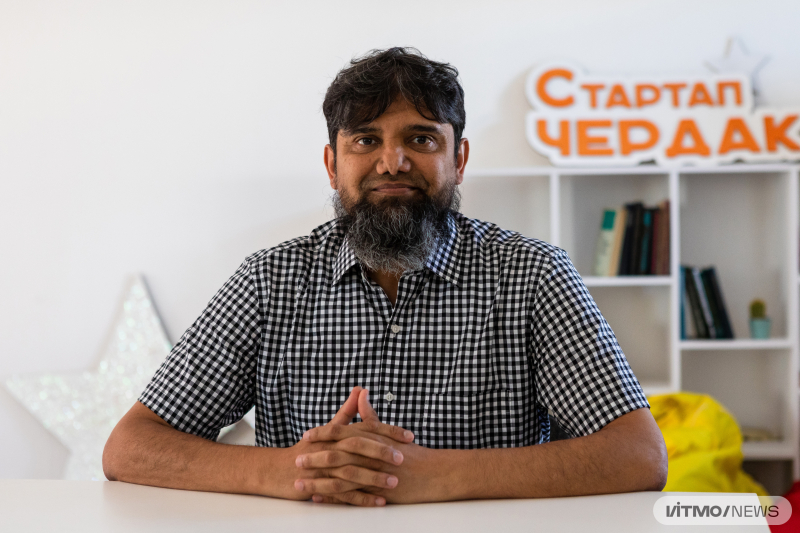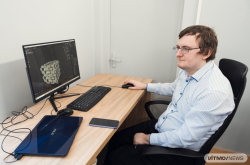You’ve been specializing in mechanical manufacturing for over 20 years. Could you tell us more about your research?
In 2006, I got my PhD from Nanjing University of Aeronautics and Astronautics. Back then, I specialized in high-speed milling of hardened steels and other difficult-to-cut alloys. After that, I continued researching and developing industrial solutions for subtractive manufacturing.
In contrast to additive technologies, where the material is added layer by layer to create a particular part, the material is progressively removed in subtractive production. As the source material, you can have a block, a cylinder, a plate, or other shapes to start with. You then gradually remove the material from the blank and end up with the necessary part through controlled processing.
Two years ago, I started working with additive technologies as well. Imagine regular 3D printing: layer by layer, you create a consolidated part or a highly complex shape. The process is kind of similar to the 3D printing industry, but instead of plastic, you’d use powder made from a metal or an alloy, while instead of a printing head, there’d be a laser beam. With this method, you can produce detailed objects with complex shapes to be used in biomedical engineering, mechanical manufacturing, robotics, the oil and gas industry, automobile production, aviation, and space industry. However, size does matter – the parts produced with this method have to be miniature, otherwise the additive technology isn’t cost-effective.
I am curious to see how different methods can be applied: for instance, by combining additive technologies and various ways of mechanical processing to create products in complex shapes and optimize their production, making them cheaper. Currently, in collaboration with a leading university in Australia, we are developing hybrid additive-subtractive processing methods. With those, we can produce very complex shaped and sized parts from a powder made of stainless steel, titanium alloys, and Hastelloy (nickel-based alloy). The unique and highly beneficial aspect of this approach is that we don’t have to change the machine or its settings to produce a part: the additive mode of the process builds the major shape, including the interior, whereas the subtractive mode precisely removes the material from the required locations. With this method, we can create parts of a seat belt assembly or microwave guides for space applications.
Another important matter is making this production sustainable. For instance, when a material is cut at a very high speed, a great amount of heat is generated and because of this constant heat generation, the production tooling tends to wear out quicker. This means that manufacturers have to purchase new tools more frequently, which in turn means higher expenses, time, and transportation costs. To prevent this reduced tool life, we need to introduce a fluid that will dissipate this heat. For this purpose, I have been investigating the application of liquid nitrogen and carbon dioxide for an effective removal of heat from the process. Both of these substances cool the machine down, while the latter also turns into a quasi-solid form at low temperatures, called “carbon dioxide snow.”
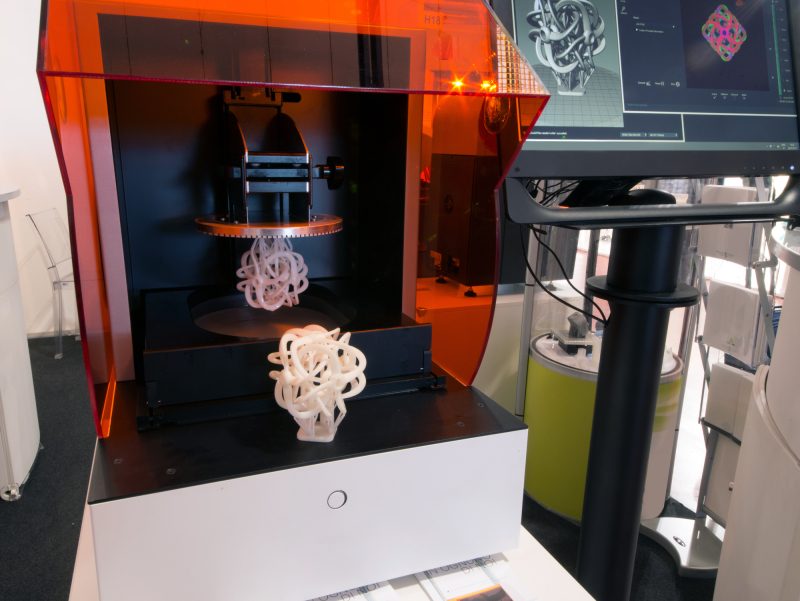
Laser 3D printing. Credit: moreno.soppelsa / photogenica.ru
How did you start collaborating with ITMO scientists?
As I’ve mentioned, I am working on hybrid additive and subtractive processing methods with my Australian collaborators. We can already create objects of any shape or complexity, but like other 3D printing processes, the surfaces of the produced parts aren’t smooth, which means that such parts aren’t applicable for industrial use. That’s why we need to apply novel automated surface postprocessing methods. On ITMO University’s website, I learned that the scientists from the Institute of Laser Technologies can imbue the surfaces of metal objects with various functional properties, for instance, making them more durable or biocompatible. I thought that together we could come up with something interesting. That’s why when I was invited to join the ITMO Fellowship program, I decided to use this opportunity.
I hadn’t been to Russia before, so I opted for the short-term Micro Fellowship track to get to know the university’s team. After the initial online seminar with researchers from the Institute of Laser Technologies where we each talked about our research, I held on-site lectures for ITMO students.
Read also:
In one of your lectures, you talked about industry 4.0 – the application of AI in production and automation. How have these digital technologies been implemented into the laser industry and why have we yet to see “smart lasers” instead of people?
First of all, it’s important to note that there is a difference between smart and intelligent devices. The former can’t function without their sensors, because it’s from these sensors that smart devices get their data and calls to action. Let’s say, that if a laser cuts through the product, a smart system has to catch it in real time and give feedback to the machine control to lower the laser power.
Now, an intelligent system is based on learning. It receives a data set – the results of a previous similar procedure, the type of material, and the necessary weld seam – and then it generates an algorithm to reproduce these results: for instance, it suggests an optimal power of the laser. We mean such intelligent devices when we talk about AI and optimization in the laser industry.
Various companies are already implementing AI-based systems. For instance, Trumpf, one of the leaders in the market of industrial lasers, has implemented adaptive control based on machine learning in its industrial laser devices to optimize their operation and control product quality. Depending on the thickness of the part, its material, chemical composition, and other factors, the system provides special recommendations: for example, it can select the appropriate welding seam path, focus, and beam power. During welding, the entire process is monitored with various sensors. If defects occur, the AI-based algorithms detect and correct them without stopping the welding process. However, it is important to understand that such examples are found only in a few leading companies in the world. Implementing AI in industrial laser systems requires a lot of time and resources, which are not always available to other companies. Therefore, human expertise remains relevant.
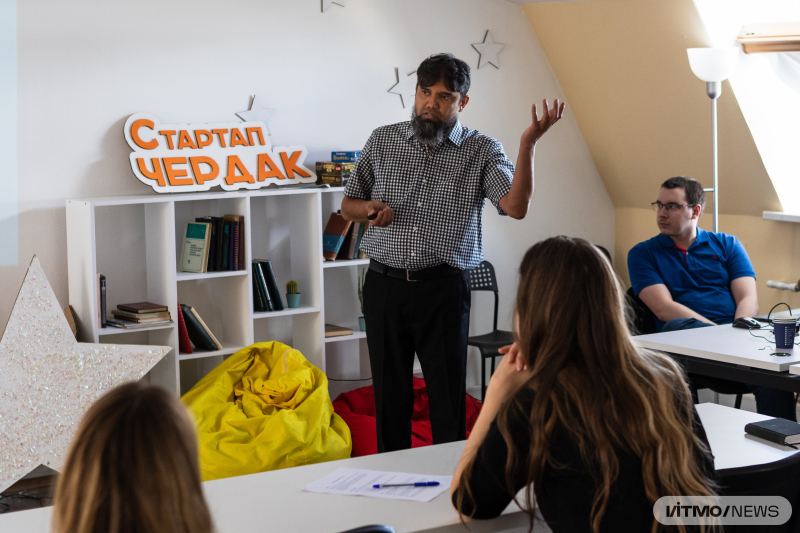
Dr Asif Iqbal's lecture. Photo by Dmitry Grigoryev / ITMO.NEWS
Nevertheless, AI implementation is already changing the labor market and the demands for professional qualifications. What about laser engineers – will they have to understand IT at the same level they understand physics?
It all depends on the type of specialization. The laser industry has long been in need of more than just physicists. Let’s say, there is a student who doesn't even know the basics of physics and doesn't understand how a laser beam is formed, but is excellent at calculations, machine learning, and intelligent systems. Also, there is another student who is great at focusing and controlling the laser beam, generating short laser pulses from nanoseconds to femtoseconds according to the processing required but has never encountered machine learning before. These students are quite different, yet each of them can contribute to the laser industry: the first can create and program a new system, while the second can conduct research in the field of laser physics. It is usually not easy for one person to be deeply knowledgeable in all areas. Therefore, it is normal to specialize in a particular field.
As you know, there are two opinions on how the development of AI will change the training and recruitment of personnel. Some believe that AI and robots will indeed largely replace people and cause unemployment. Others are confident that these changes will open up many more opportunities, including for further professional development and employment. I believe that both opinions are equally valid. Yes, people will lose their jobs, but with the development of technology, new tasks related to digital technologies will also emerge. Those who can improve their relevant qualifications will remain in demand in the labor market.

Dr Asif Iqbal's lecture. Photo by Dmitry Grigoryev / ITMO.NEWS
What other technologies, apart from machine learning, can take the laser industry to the next level?
First, it’s the Internet of Things (IoT). Laser installations are equipped with numerous sensors that monitor the process and the quality of the in-progress product. IoT allows these devices to exchange data with each other and transmit it to the machine control. This information can be processed to identify various patterns and anomalies, such as analyzing why a particular process is consuming more energy than usual.
Regular computers are not suitable for processing large amounts of data from sensors and simulating welding processes. For them, such calculations can take around 4-5 days. Therefore, the use of cloud computing is necessary, which can help bring down the process of data analysis to just a few hours.
Blockchain can be used for a secure and transparent accounting of transactions throughout the supply chain of any product, which is also relevant for the laser-based production industry. Another way of optimizing supply chains is the use of RFID tags and remote sensing methods. RFID tags can be used to obtain, process, and transmit radio frequency signals from an object, while remote sensing helps determine the location of that object. This allows suppliers, buyers, and manufacturers to know the location of a product or raw material and track delivery times.
Read also:
Sustainability – making sure that production has minimal negative environmental, social, and economic consequences – is another major trend of the past few years. Is it relevant for the laser industry?
Lasers are generally considered a rather sustainable technology, as only a few watts are needed to create a beam and the technology is not wasteful of the work material. However, a method’s sustainability also depends on its byproducts: for example, sometimes hazardous fumes are released during product processing. If the production process is not optimized, even the most sustainable technology can become extremely unfriendly to nature and humans.
That’s why, in the laser industry, there is, of course, also a need to make production sustainable. Several solutions already help achieve these goals. For example, to avoid wasting time and resources on experiments on real equipment, we can use its digital twin. In my opinion, this is the most outstanding innovation in smart manufacturing.
Digital twins are exact virtual copies of equipment or entire systems that model different scenarios on a computer. For example, with this technology, you can see how much energy is spent on important cutting and milling processes, and how much energy goes to other processes such as conveyor belts, ventilation, and lighting. With this knowledge, you can refine the system and reduce electricity consumption. Digital twins also help determine when to perform preventive maintenance and replace parts without halting production.
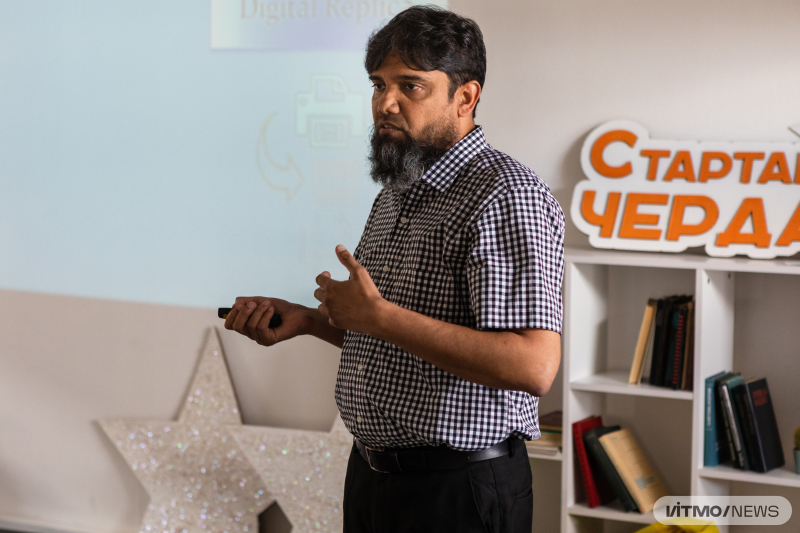
Dr Asif Iqbal's lecture. Photo by Dmitry Grigoryev / ITMO.NEWS
How are you planning to further collaborate with researchers at ITMO?
I am already working on two projects with different research teams at ITMO University. In the first project, we are improving the microhardness of the surface of parts made from titanium alloys and Hastelloy (nickel-based alloys) that I developed with my collaborators from Australia. To do this, we apply a polyamide film to the product and irradiate it with a laser beam. The incoming heat affects the crystalline carbon particles, which are then absorbed into the surface. With this method, we can increase the hardness of any part, regardless of the material it is made of, whether it is a specific metal or an alloy.
The second project is related to structural engineering and biomedical applications. We are studying which laser processing characteristics (such as laser beam power, distance between laser tracks, and number of passes) are best suited for generating the smoothest possible surface and surface patterns on the parts in order to increase their compatibility and reduce the risk of rejection.
When these projects are completed, I will approach the team of the Institute of Laser Technology with a proposal to work collaboratively on applying laser cladding for the repair of critical defects in high-value engineering components. For instance, gas turbine blades, propeller shafts, and automotive engine parts, that operate in extreme engineering environments often acquire surface defects. Before the advent of laser cladding, these components needed to be recycled, as the technologies available at that time could distort the geometry because of excessive process heat. A laser beam, because of its high energy density and low total energy, operates locally on the defect only without generating excessive heat to distort the part. Thus, with laser cladding, it is possible to remanufacture such components back to service. I believe this area would be highly beneficial for ITMO as well, and I can visit the university for another month for it.
